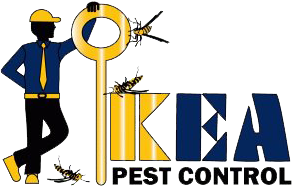Spiders are a common and familiar group of arthropods.
They are similar to insects in that they both have exoskeletons (their skeletons are on the outside of their bodies) and jointed legs.
DIFFERENCE BETWEEN SPIDERS AND INSECTS
Any arthropods that share the same characteristics as spiders are known as arachnids. Other arachnids, or spider relatives, include ticks, daddy-longlegs, scorpions, and mites. Another difference between spiders and insects is that all spiders can produce silk throughout their lifetime. However, just a few insects can produce silk, and then at only certain times during their life. Spiders use silk to build webs and other types of snares, egg cases, draglines, and refuges. Silk is also produced by spiderlings (young spiders) during a process called ballooning in which the spiderlings shoot silk into the air and are carried away by the wind.
Spiders are predators, feeding mainly on insects.
Spiders are considered beneficial because of the large number of insects they prey on, including a number of pest species. All spiders have venom and are therefore venomous. However, most spiders are harmless to people. They are very shy and usually remain hidden in undisturbed areas. Many are active only at night. They are not aggressive and they will try to escape when confronted. Few spiders bite, even when coaxed. Fortunately, the bites of most spiders are less painful than an average bee sting.
COMMON SPIDERS IN AND AROUND HOMES
Spiders can be divided into one of two groups depending on how they capture their prey: hunting (sometimes known as wandering) spiders and web-building spiders. All spiders produce silk, but hunting spiders do not construct webs to capture food. Instead, they rely on their quickness and relatively good eyesight to capture prey. Web-building spiders construct webs in rather quiet, undisturbed places to capture their food. They live in or near their web and wait for food to come to them. They generally have poor eyesight and rely on sensing vibrations in their web to detect prey.
CONTROL OF SPIDERS IN AND AROUND HOMES
Spiders are common in homes during warm weather, although they can be found indoors any time during the year. Their numbers usually peak during late summer and fall, when they are sometimes found indoors searching for winter hibernation sites. Spider control is usually challenging. It is difficult to eradicate all spiders from a home. It is also unnecessary. Properties located in areas favorable to spiders, such as by rivers, lakes, or fields, are more likely to have large numbers of spiders. Tolerate spiders whenever possible. Because of their beneficial nature, they are very important to the environment. When tolerance is not possible, use an integrated approach using nonchemical methods supplemented with chemical means to reduce spider numbers.
